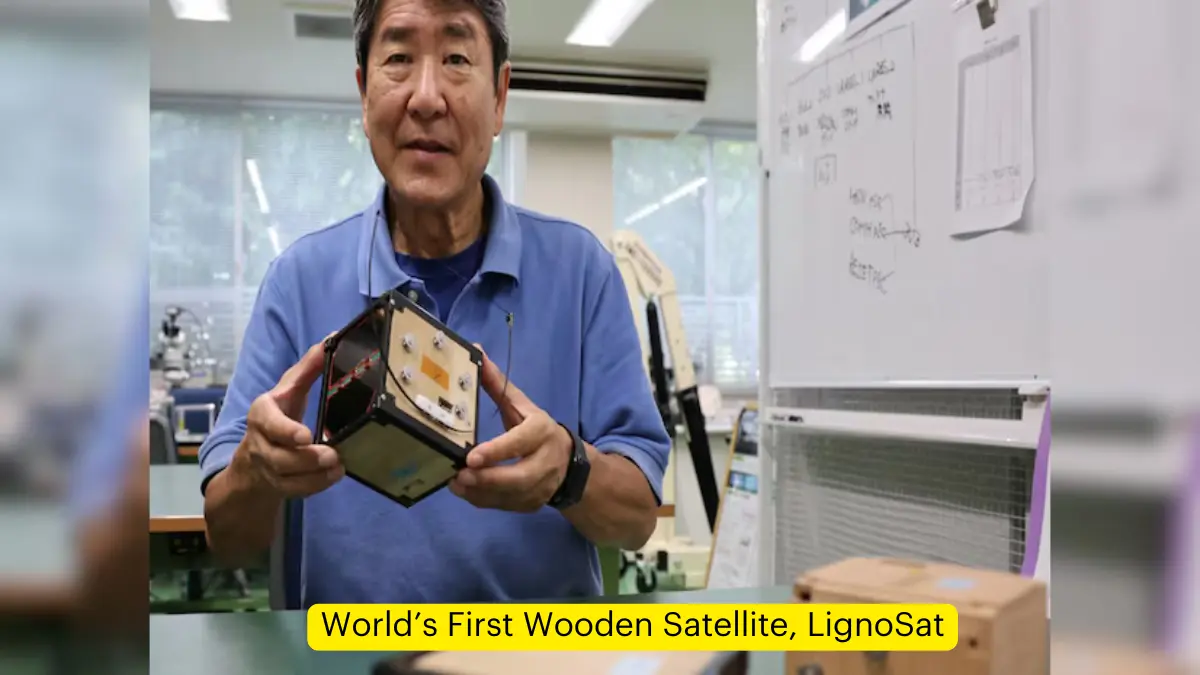LignoSat: World’s First Satellite Made of Wood
Why in the news?
LignoSat, the first satellite made from wood, was launched to test wood’s durability in space, offering an eco-friendly alternative to traditional metal satellites and potential for future space structures.
Introduction:
- LignoSat is the world’s first satellite with wooden components, launched aboard a SpaceX rocket from Kennedy Space Center, Florida.
- Developed by Kyoto University researchers and Sumitomo Forestry, Japan, its purpose is to establish wood as a viable space-grade material.
- The satellite is expected to be released into orbit 400 km above Earth in December, after being flown to the International Space Station (ISS).
Construction and Material:
- LignoSat weighs just 900 grams and is the size of a coffee mug.
- It is made of wooden panels, along with small plastic and silicon parts, using traditional Japanese craftsmanship techniques.
- Researchers experimented with three types of wood: birch, cherry, and magnolia. Magnolia was chosen for its lightweight properties and resistance to cracking.
- The satellite was built without screws or glue, relying on craftsmanship for assembly.
Environmental Benefits and Future Prospects:
- LignoSat will stay in orbit for six months before burning up upon re-entry into Earth’s atmosphere, providing insight into the durability of wood in extreme space conditions.
- Researchers aim to test how wood expands and contracts in space and how accurately the magnetism can be measured inside a wooden structure.
- The environmental benefits of using wood over traditional metals, like aluminium, are notable: when burned, wood produces only water vapour and carbon dioxide, making it a cleaner alternative.
- This innovation could lead to timber being used in future space explorations, including on the Moon and Mars.
About LignoSat:
- Name: LignoSat (combination of “ligno” for wood and “satellite”).
- Developed By: Kyoto University and Sumitomo Forestry Co.
- Objective: Demonstrate wood’s eco-friendliness and cost-effectiveness in space exploration.
- Construction: Made from magnolia wood for durability and adaptability.
- Launch: Sent aboard a SpaceX rocket to the International Space Station (ISS).
- Mission: Released from ISS to test its durability against extreme temperature changes.
- Data Collection: Monitors strain, performance, and wood’s ability to withstand space conditions.
- Environmental Benefit: Wood satellites produce cleaner byproducts upon reentry, unlike metal satellites that pollute.
Sources Referred:
PIB, The Hindu, Indian Express, Hindustan Times





